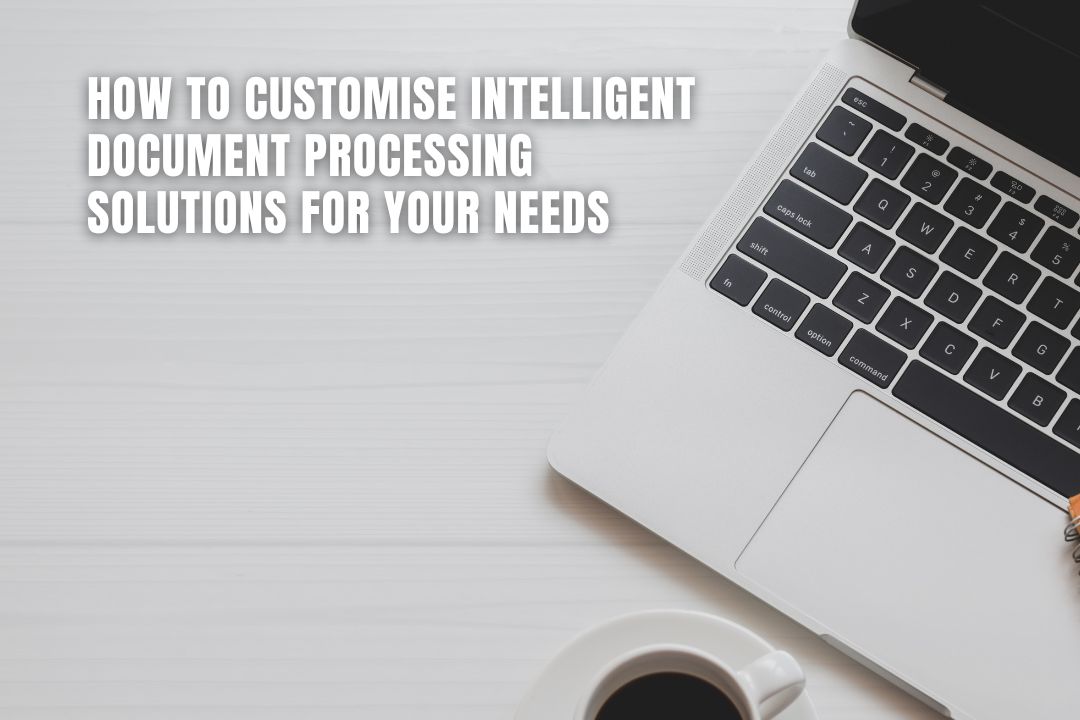
In today's digital age, businesses deal with an overwhelming amount of data and documents on a regular basis. This influx of information can sometimes make it challenging to process and extract relevant insights efficiently. Thankfully, intelligent document processing solutions have emerged as a powerful tool to automate these tasks and streamline workflows. In this article, we will explore how businesses can effectively customise intelligent document processing solutions to meet their specific needs.
IDP refers to the use of artificial intelligence (AI) technologies like machine learning, natural language processing (NLP), and optical character recognition (OCR) to automate document-centric workflows. Intelligent document processing solutions have the ability to understand, categorise, and extract data from multiple documents accurately, and take appropriate actions based on predefined business rules.
There are several advantages of customising an IDP platform to your liking:
By customising an IDP solution, businesses can optimise processes based on their unique requirements. Automation significantly reduces the time taken for tedious tasks, such as data entry or document sorting, by minimising the need for human intervention. Customisation ensures that the solution addresses specific pain points specific to each business, making the operational processes more streamlined and efficient.
Every industry has its own set of terminologies and documents that demand higher accuracy levels due to legal or compliance reasons. By customising an IDP solution, businesses can train the system to interpret these industry-specific terms correctly and improve accuracy in extracting information from documents—for instance, contracts in the legal sector or invoices in finance.
Customised intelligent document processing solutions are designed around a company's unique workflow patterns and requirements. With automation reducing manual effort drastically, organisations can save costs associated with hiring additional personnel for data entry or document handling tasks. Moreover, speeding up document processes using AI-powered systems like IDP leads companies towards a faster return on investment (ROI).
Now that we've emphasised the benefits of customisation, let us delve into the process of creating and customising an intelligent document processing solution.
Before embarking on the customisation journey, it is vital to have a comprehensive understanding of your business's needs and goals. Identify pain points that you aim to address with IDP, such as reducing manual data entry errors or eliminating document processing delays. Establishing measurable goals at this stage will help in measuring the success of the implementation.
An integral part of customisation is evaluating the types and formats of documents commonly processed by your organisation. This analysis determines specific capabilities required from an IDP solution. Consider factors such as multiple languages, scanned documents, non-standard layouts, or variations related to font types and sizes within your dataset.
Customising an IDP solution involves training the system to extract relevant data from various document types accurately. Create custom rules based on desired fields and their respective locations within documents while keeping in mind any intricacies associated with specific document formats.
Creating a testing dataset that reflects real-world examples pertaining to your business is crucial for accurate customisation results. The dataset should encompass diverse document samples, including common variations encountered across different document categories or departments while representing potential outliers too.
Training an IDP system requires iterative cycles involving continuous refinement through repeated iterations. Feeding it with a subset of available data initially ensures focused training without overburdening users, who can then provide active feedback during the refinement stages.
To leverage intelligent document processing to its full potential, here are a few advanced customisation techniques worth considering:
While basic customisations primarily focus on extraction accuracy, predictive models take things further by anticipating information based on contextual analysis within documents or previous reporting patterns generated in similar scenarios.
Incorporating machine learning algorithms allows IDP solutions to learn from patterns within your dataset, becoming increasingly accurate over time. Leveraging these algorithms ensures better handling of variations in document formats and layout complexities while continuously improving detection capabilities.
Customising intelligent document processing (IDP) solutions aids businesses in meeting the unique and evolving needs of their information management systems. By enhancing efficiency and accuracy and reducing costs associated with manual document handling, organisations can gain a competitive advantage. Implementing customisation techniques like defining goals and requirements, assessing document types, establishing extraction rules, developing testing datasets, and applying advanced techniques enables companies to optimise IDP solutions effectively. Embrace the power of customisation and unlock the full potential of intelligent document processing for your business today!